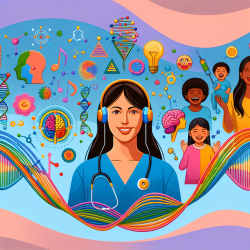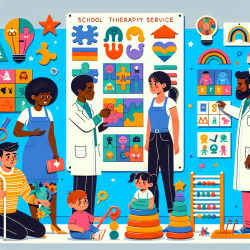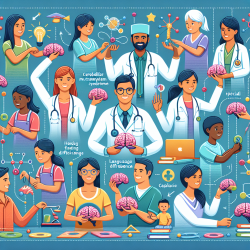Introduction
In the realm of speech-language pathology, the integration of cutting-edge research into clinical practice is paramount for enhancing therapeutic outcomes. The 2012 update on the developmental and genetic classification for malformations of cortical development provides invaluable insights that can significantly impact the way practitioners approach speech and language disorders in children. This blog post explores the key findings of this research and how they can be applied to improve therapeutic interventions.
Understanding Malformations of Cortical Development
Malformations of cortical development (MCD) encompass a variety of developmental disorders that are often linked to neurodevelopmental delays and epilepsy. These malformations are categorized based on the developmental stage at which the process is disrupted, with recent updates emphasizing genetic factors. The classification system outlined in the research offers a comprehensive framework for understanding the genetic underpinnings of these disorders, which is crucial for tailoring interventions.
Genetic Insights and Their Implications
The research highlights several genetic mutations associated with MCD, including those affecting neuronal migration and cortical organization. For speech-language pathologists, this knowledge is crucial as it underscores the need for a multidisciplinary approach in diagnosis and treatment planning. By understanding the genetic basis of a child's condition, practitioners can better predict potential speech and language challenges and customize their therapeutic strategies accordingly.
Application in Speech-Language Pathology
Incorporating genetic insights into speech-language pathology can lead to more precise and effective interventions. Here are some ways practitioners can leverage this knowledge:
- Early Identification: Genetic testing can aid in the early identification of children at risk for speech and language disorders, allowing for timely intervention.
- Customized Therapy Plans: Understanding the specific genetic mutations involved can help tailor therapy plans to address the unique needs of each child.
- Collaborative Care: Working closely with geneticists and neurologists can enhance the overall care plan, ensuring that all aspects of the child's development are addressed.
Encouraging Further Research
While the current classification system provides a robust framework, ongoing research is essential to refine our understanding of MCD and its impact on speech and language development. Practitioners are encouraged to stay informed about the latest genetic discoveries and consider participating in research initiatives that explore the intersection of genetics and speech-language pathology.
Conclusion
The integration of genetic insights into speech-language pathology holds great promise for improving outcomes for children with developmental disorders. By embracing a data-driven approach and collaborating across disciplines, practitioners can enhance their therapeutic impact and contribute to the evolving understanding of cortical development disorders.
To read the original research paper, please follow this link: A developmental and genetic classification for malformations of cortical development: update 2012.










